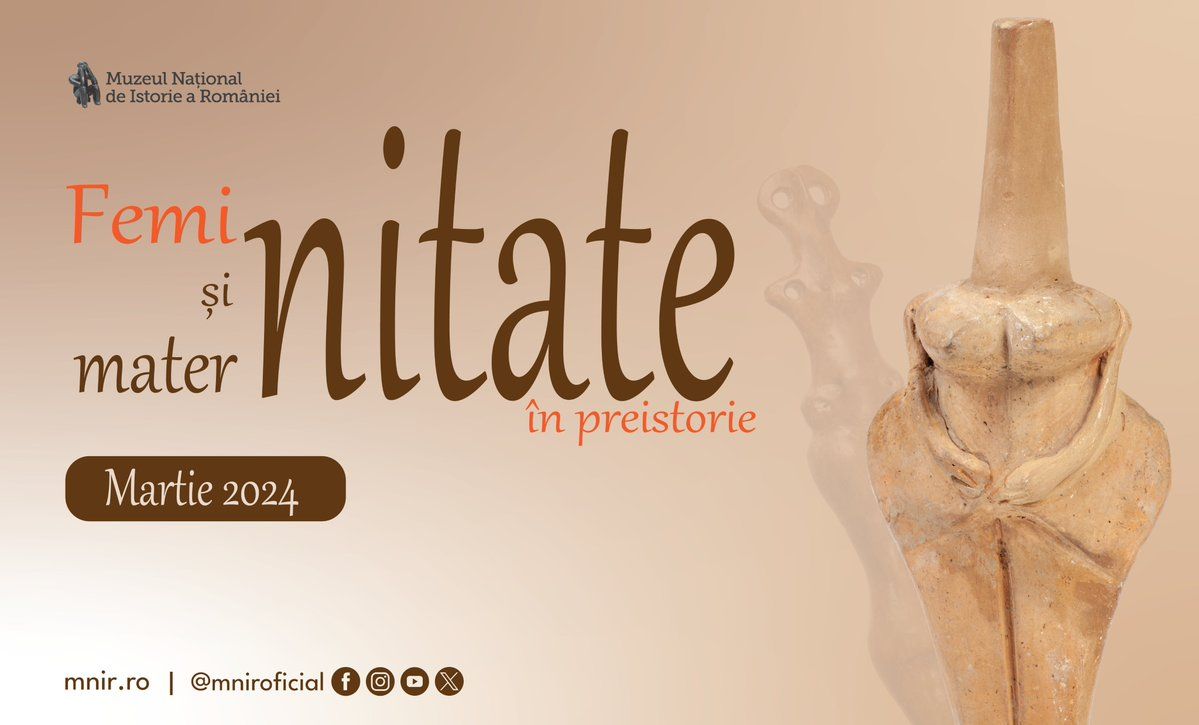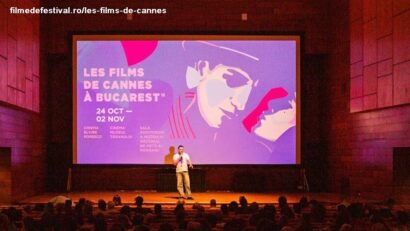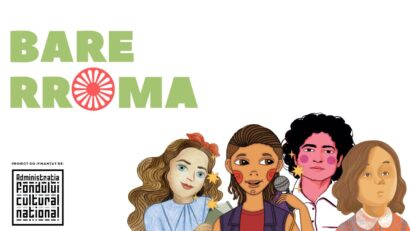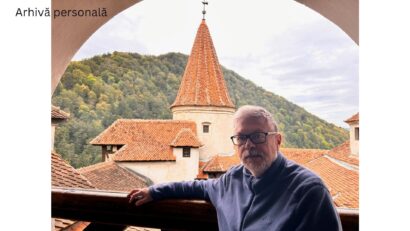The Exhibition “Femininity and motherhood in prehistory”
In March, the National History Museum of Romania celebrated women through a special exhibition

Ion Puican, 30.03.2024, 14:00
The month of March marks the beginning of spring and the celebration of femininity, these being the international symbols associated with this month. The National History Museum of Romania (MNIR), in the historical center of Bucharest, celebrated the month of March with a very special exhibition. Its curator, the archaeologist and museographer Andreea Bîrzu, told us about this exhibition:
“In March, the National History Museum of Romania celebrates women through a new temporary exhibition: ‘Femininity and motherhood in prehistory. Neo-Eneolithic anthropomorphic plastic representations from the museum collection. An exhibition that we especially dedicated to all ladies and young ladies.”
Andreea Birzu also explained the curatorial concept behind this exhibition hosted by the National History Museum of Romania.
“The curatorial project offers the public the extraordinary opportunity to learn the story of some of the most spectacular artefacts from this remote period in human history. The exhibition discourse is structured around exceptional archaeological cultural assets from the museum’s collection of prehistoric objects, miniature embodiments of female shapes, vessels and statuettes that have lasted more than 6,000 years. Expressive, with a great emotional and symbolic impact, many of these anthropomorphic representations are true masterpieces of prehistoric art.”
Curator Andreea Bîrzu gave us more details about the prehistoric artifacts on display at the National History Museum of Romania:
“Of great diversity in shape, decoration and artistic achievement, the statuettes and vessels depict female characters in various poses. Perhaps the most impressive, the one that prompts the viewer to reflect, is that of motherhood, suggested by anatomical details carefully chosen and modelled by the prehistoric craftsmen. The breasts and the pubic triangle are visible, just like the protruding abdomen. Often, these pieces have an elaborate decoration, with geometric or spiral designs, inlaid on the surface of the body, suggesting elements of clothing, ornaments, hairstyles or even tattoos.”
We asked Andreea Birzu which was in her opinion the item that impressed visitors the most.
“Perhaps the most impressive representation of the female figure is that of motherhood, suggested by carefully chosen and modeled anatomical details. … The figurine of the mother with the child on her chest, discovered at Rast, in Dolj county, in southwest Romania, is perhaps the most relevant.”
But what these arfecats meant to the prehistoric people? Andreea Birzu explained:
“These artifacts give us particularly valuable information about the development of the community, about the beliefs, concerns and ideals of people in the distant past. They illustrate aesthetic and religious canons specific to the Neo-Eneolithic world, understood as expressions of reality, of aspects of daily life, of women’s identity, or as representations of divinities, of fecundity and fertility, or as objects of worship. The existence of these artifacts is closely related to the spiritual life of prehistoric societies, depicting through symbolic images the values and principle of femininity. Femininity and motherhood were certainly sources of complex meanings for the prehistoric man, which remain rooted in the collective consciousness of modern people.”
The exhibition hosted by the National History Museum of Romania was received with interest by the audience, Andreea Birzu told us:
“The reaction of the visitors who see these objects, some of them for the first time, is very interesting. Most of them told me that they were delighted by the expressiveness of these pieces, by their ability to attract and hold their gaze like a magnet. Some have also said that they were amazed by the extraordinary power of abstraction of the prehistoric artisans, who managed to render with simple, rudimentary means the essence of femininity which they transposed in these figures of clay and bone.”






























